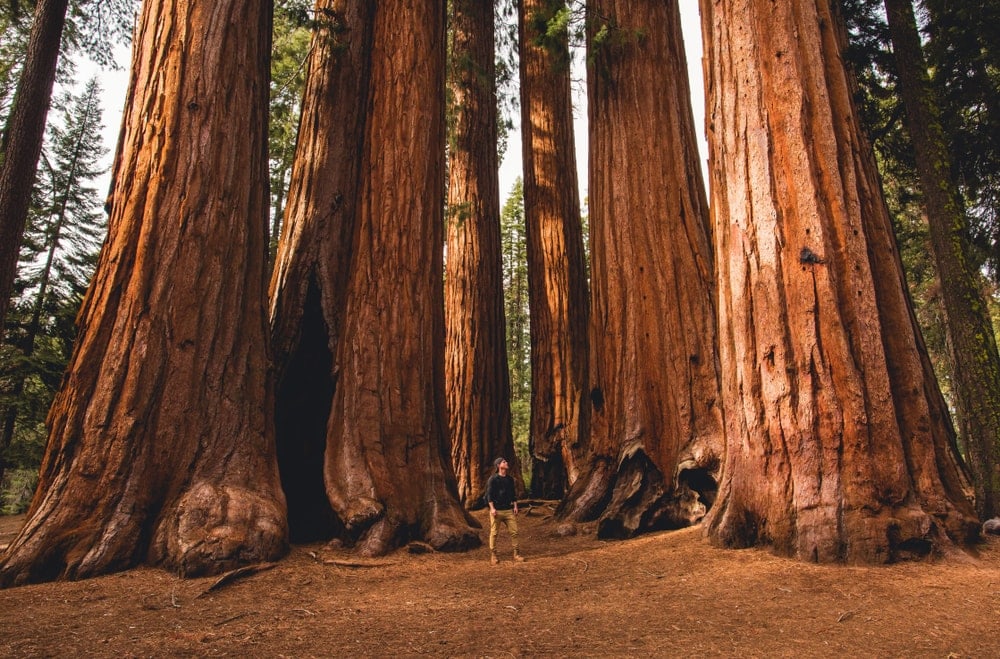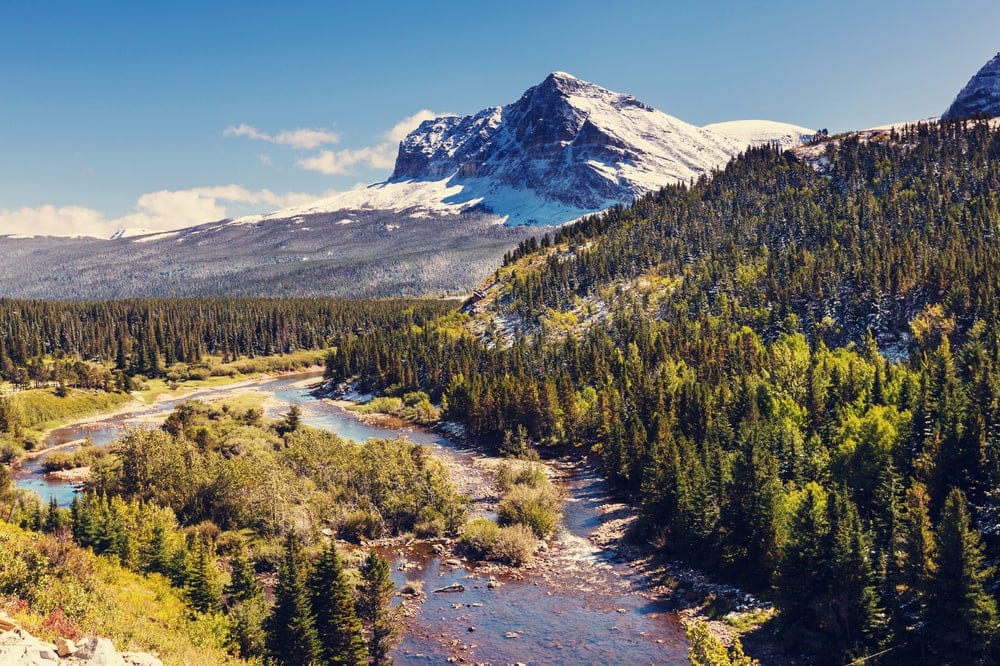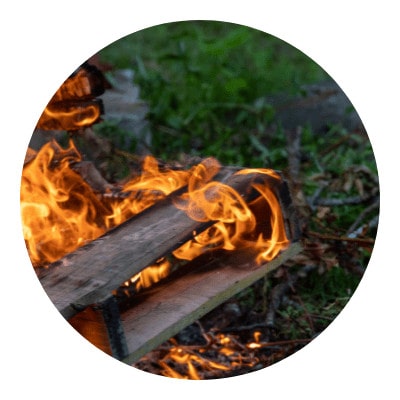
A tree is a woody plant that regularly renews its growth. Most plants classified as trees have a single self-supporting trunk containing woody tissues, and in most species, the trunk produces secondary limbs, called branches.
Trees are everywhere, in cities, mountains, forests, even on movie sets and it’s irrefutable that they add beauty to the places we visit and live in. But what are their names and where can you go to connect with these giants?
Whether you’re in search of your next outdoor adventure, are a photographer, a tree expert, or are simply curious about the biggest and most breathtaking trees in our nation, we’ve gathered all the information you need to learn, enjoy, and get inspired.

Share This Image On Your Site
<a href="https://outforia.com/national-park-with-big-trees/"><img style="width:100%;" src="https://outforia.com/wp-content/uploads/2022/01/National-park-with-big-trees-infographics-01132022.png"></a><br>National park with big trees Infographic by <a href="https://outforia.com">Outforia</a>17 National Park with Big Trees That Call Them Home
1. Channel Islands National Park, California

Channel Islands National Park comprises five ecologically rich islands off the Southern California coast. The Torrey pine (Pinus torreyana) is an endangered species and the rarest pine species in the United States and lives on Santa Rosa Island in Channel Islands National Park.
The Torrey pine is a broad, open-crowned pine tree growing 26 to 56 feet (8 to 17 meters) tall with 9.8 to 11.8 inch-long gray-green needles (0.25 to 0.3 meters) grouped in fives. The cones are stout and heavy, typically 3.1 to 5.9 inches (0.08 to 0.15 meters) in length and broad, and contain large, hard-shelled, but edible pine nuts.
2. Congaree National Park, South Carolina

Congaree National Park is a 26,276-acre (10,634 hectares) park in central South Carolina, located 18 miles (29 kilometers) southeast of the state capital, Columbia. This is where you will find the Loblolly pine (Pinus taeda). The Loblolly pine grows to an astounding 169 feet (51.5 meters). Congaree National Park is also home to several cypress trees well over 500 years old.
Identifying a Loblolly pine requires a bit of detail. Look out for its 5 to 9 inch (0.13 to 0.23 meters) long needles and its thick dark reddish-brown bark. The crown is rounded and the trunk is tall and straight. These gentle giants are worth the trip to South Carolina.
3. Everglades National Park, Florida

Everglades National Park is the most notable among the 11 national parks in Florida with a 1.5 million-acre wetland preserve on the southern tip of the state. It’s home to coastal mangroves, sawgrass marshes, pine Flatwoods, the endangered leatherback turtle, Florida panther, the West Indian manatee, and the pond and bald cypress trees.
The pond cypress (Taxodium ascendens) can grow between 50 and 60 feet (15 and 18 meters) and is a deciduous coniferous species, with leaves 0.12 to 0.4 inches (0.04 to 0.12 meters) long, slender, and on the shoots that tend to stand erect rather than spread.
Not to be mistaken for the pond cypress, the bald cypress (Taxodium distichum) is a large tree up to 130 feet (40 meters) tall, with a swollen base. The growth habit is pyramidal, or else with an open, flat-topped crown.
4. Great Basin National Park, Nevada

Great Basin National Park is in eastern Nevada near the Utah border. It’s in the Great Basin Desert and contains most of the South Snake mountains. It’s the place you will find the oldest non-clonal (the trunk itself is the same age as the root system) species of tree on the planet, the Great Basin Bristlecone Pine (Pinus longaeva).
It isn’t too difficult to identify this unique tree, as the Great Basin Bristlecone Pine (Balfourianae) looks as if it has been shaped by the wind. Its needles, which are about one-inch-long and grow in packets of five, surround the branches in tightly-bunched tufts.
5. Hawai’i Volcanoes National Park, Hawai’i

Hawai’i Volcanoes National Park is on the big island of Hawaii Island. At its heart are the Kīlauea and Mauna Loa active volcanoes and hosts Hawai’i’s most iconic and tallest tree, the ‘Ōhi’a lehua tree (Metrosideros polymorpha).
The ‘Ōhi’a lehua tree can be easily identified by its bright blossoms. It can range from a prostrate shrub to a 100-foot (30.5 meters) tree. Young bark is smooth and light gray and becomes rough and scaly with age. In a garden, it’s generally no larger than 40 feet (12.2 meters) tall and 30 feet (9 meters) wide often with a broad, columnar (upright and narrow) silhouette.
The leaves are generally ovally ranging in size from 1/2 to 3 inches (0.01 to 0.08 meters) long and 1/2 to 2 1/4 (0.01 to 0.06 meters) inches wide. The mature leaves are generally leathery and smooth dark green, but some forms are woolly or hairy underneath and may appear grayish.
6. Joshua Tree National Park, California

Joshua Tree National Park is located in southern California, where the Mojave and Colorado deserts come together. The park is east of San Bernardino, Los Angeles, and north Palm Springs.
The tallest tree in Joshua Tree National Park, Barber Pole or Joshua Tree (Yucca brevifolia), grows in an area called Queen Valley Forest. These trees usually have a single trunk and grow three to nine feet tall before branching. Branches end in clusters of spiky leaves and white, rounded flowers.
The trunk of the Joshua tree is usually one to three feet in diameter. Joshua trees can grow to between 20 and 70 feet (6 to 21 meters) but average around 40 to 43 feet (12 to 13 meters). Since Joshua trees grow an average of one-half inch per year, experts estimate that this specimen is more than 900 years old.
7. Kings Canyon National Park, California

Kings Canyon National Park is adjacent to Sequoia National Park in California’s Sierra Nevada mountains. It’s located in two California counties, Fresno and Tulare, and is adjacent to Sequoia National Park.
At an imposing height of 267.4 feet (81.5 meters), the General Grant Tree is the largest giant sequoia (Sequoiadendron giganteum) in the General Grant Grove section of Kings Canyon National Park. It has been deemed the second largest tree in the world.
8. Olympic National Park, Washington

Olympic National Park is on Washington’s Olympic Peninsula in the Pacific Northwest. The park sprawls across several different ecosystems, from the dramatic peaks of the Olympic Mountains to old-growth forests. It boasts several large trees over 100 feet (30.5 meters) tall. We’ll cover them all one by one.
8.1 Western Red Cedar

The western red cedar (Thuja plicata) is covered in scale-like green leaves that form flat sprays. The aromatic leaves emit a pineapple scent when crushed. Small, slender cones grow on the western red cedar tree, and it has brown bark with fissures running the length of the trunk.
8.2 Douglas Fir

The douglas fir (Pseudotsuga menziesii) needles are single on the twig. Its tips are blunt or slightly rounded, flat and two-sided, the same color on both sides, and soft to the touch. Generally, needles are ¾ to 1 ¼ inch (0.23 to 0.4 meters) long, and very fragrant. The bark on young trees looks very much like Subalpine fir, becoming more grayish and rigged as the tree matures.
8.3 Western Hemlock

The western hemlock (heterophylla) is unique in many ways. It can grow up to 200 feet (61 meters) and its branchlets tend to droop and the leader at the top of the tree curves and droops over rather than standing straight, like firs and spruces.
It has distinctive short, flat needles that are usually flattened on the twig, but irregular and variable in length. The needles have white lines on the lower surface. The cones are usually less than an inch long, and the scales are thin and rounded.
8.4 Bigleaf Maple

The bigleaf maple (Acer macrophyllum Pursh) has the largest leaves of any maple at 5.9 to 11.8 inches (0.15 to 0.3 meters) across, with five deeply incised palmate lobes, with the largest running about 24 inches (0.6 meters). During autumn, the leaves turn to gold and yellow, often to spectacular effect against the backdrop of evergreen conifers.
8.5 Sitka Spruce

Last, but not least, of the giant trees in Olympic National Park is the Sitka Spruce (Picea sitchensis). This marvelous specimen is a large, coniferous, evergreen tree growing to almost 330 feet (100 meters) tall, with a trunk diameter at breast height that can exceed 16 feet (5 meters).
9. Petrified Forest National Park, Arizona

Though now a forest of petrified trees, the Petrified Forest National Park, respectfully, makes it on our list due to its history with large trees. It is one of the national parks located in Arizona. Its Rainbow Forest is full of colorful petrified wood (Araucarioxylon arizonicum). In the park’s center are the petroglyphs of Newspaper Rock and the ruined village of Puerco Pueblo.
It covers about 346 square miles (896 square kilometers), encompassing semi-desert shrub steppe as well as highly eroded and colorful badlands, where trees once grew to at least 200 feet (61 meters) tall. The park is considered one of the largest concentrations of petrified wood in the world. Yes, the trees are gone, but they should always be remembered.
10. Redwood National Park, California

Redwood National Park is located in northernmost coastal California, about 325 miles (523 meters) north of San Francisco. It is roughly 50 miles (80 meters) long, with its parklands stretching from Crescent City in the north to the Redwood Creek watershed south of Orick.
Reaching the maximum attainable height of a tree, Hyperion, at 379.7 feet (115.7 meters) tall has been given the title of the world’s tallest tree. It’s a coast redwood (Sequoia sempervirens) and one of three sequoia tree species.
The needles of the coast redwood do not resemble those of the giant sequoia. They are bigger and flat. The crown is conical just like the one of the giant redwood, with an almost equally massive reddish-brown trunk with soft bark. The egg-shaped cones are small. In contrast to most other conifers, the coast redwood starts to grow again after being cut.
11. Sequoia National Park, California

Sequoia National Park is an American national park in the southern Sierra Nevada east of Visalia, California. As mentioned previously, it is adjacent to Kings Canyon National Park and within proximity to Mt. Whitney. It covers a forested area of 629 square miles (1,629 square kilometers).
The General Sherman is the tallest tree in this park. It stands 275 feet (24 meters) tall and is over 36 feet (11 meters) in diameter at the base. Sixty feet (18 meters) above the base, the Sherman Tree is 17.5 feet (5.3 meters) in diameter. Its characteristics are typical of that of most sequoias and redwoods with reddish-brown stringy and thick bark. Its foliage is narrow, gray-green, flat, with prickly ends.
12. Yosemite National Park, California

Yosemite National Park is in California’s Sierra Nevada mountains. It’s famed for its giant, ancient sequoia trees, and Tunnel View, the iconic vista of towering Bridalveil Fall, and the granite cliffs of El Capitan and Half Dome.
One of Yosemite’s main attractions is the Columbia Tree, which you can find in the Mariposa Grove. It is part of the giant sequoia (Sequoiadendron giganteum) family of trees, standing 286 feet (87 meters) tall.
You May Also Like: Check Out These Tall, Small and Weird 39 Types of Palm Trees with Photos, Infographics, Facts and more!
Other Parks, Monuments and Forest With Tall Trees
Where else can you go to spend time among woodsy giants? Here are a handful of parks with large trees and forests of their own.
13. Muir Woods National Monument, California

Muir Woods National Monument is part of California’s Golden Gate National Recreation Area, north of San Francisco. It’s known for its towering old-growth coast redwood trees.
14. Yellowstone National Park, Idaho, Montana, and Wyoming

Yellowstone makes our list for its ghostly redwood forest, where the trees are identical to the massive pines that grow 200 to 300 feet (61 to 91 meters) tall in California.
15. Glacier National Park, Montana

Glacier National Park is a 1,583 square mile (4,100 square kilometers) wilderness area in Montana’s Rocky Mountains, with glacier-carved peaks and valleys running to the Canadian border. It’s known for the Whitebark pine (Pinus albicaulis), a slow-growing, and long-lived timberline tree. Some of the oldest specimens in Glacier Park reached about 700 years in age before they recently succumbed to blister rust.
16. Acadia National Park, Maine

The red spruce (Picea rubra) is one of the most abundant of our trees. It has a narrow conical crown and a straight slightly tapering trunk which usually attains a height of 60 to 80 feet (18 to 24 meters)
17. Tongass National Forest, Alaska

The Tongass National Forest is located in Southeast Alaska and is the largest U.S. National Forest at 16.7 million acres (6,758,250 hectares). Most of its area is temperate rain forest and remote enough to be home to many species of endangered and rare flora and fauna. It houses the tallest conifer in the world, the Sitka Spruce (Picea sitchensis).
You May Also Like: Making Reservations and the Suitable Type of Camping in National Forests
15 Facts About the Big Trees in California: Giant Sequoia

Other Names For Giant and Sequoia Trees
You may also like: Check out These 63 Amazing US National Park and All the Fun Things You Can Do
Life Cycle of Giant Trees

Are you ready to experience life like a tree? Let’s go! Giant trees go through a life cycle like any other organism. It starts as a seed from a cone, which sprouts (germinates) and grows into a seedling. After many years, it turns into a mature tree. It’s that simple.
But here are the details of each cycle of its life from cone to death.
A tree starts to grow cones when it reaches its 10th year. Believe it or not, there are male cones and female cones. Female cones make the seeds, which are the size of a flake of oatmeal. Typically, in the spring, the seeds germinate and by the fall, a young tree is only about one or two inches tall.
Most young trees are called seedlings. Sequoias grow well only where there aren’t many other trees and plants growing. They prefer not to share the water and soil with other species. The average tree reaches its height in about 30 years. Giant trees, like sequoias, reach full height when they’re between 500 and 750 years old.
They grow bigger branches and super thick trunks to help them keep their balance. An easy way to tell if a sequoia is matured is if the top of the tree looks rounded. The trunks are bare for 100 to 150 feet (30 to 16 meters) or more before branches are seen. Some people compare their shape to an upside-down ice cream cone.
Sequoias’ trunks remain alive long after the tree dies, and may lie on forest grounds for hundreds of years. Yes, it’s a little sad, but a lot of small animals make their homes in fallen trees. The dead wood has many vitamins that help young plants grow and so when seeds from other plants find their way to the trunks, they start to grow. Inevitably, the tree will be part of the soil of the forest floor.
You May Also Like: Learn The Difference Between Edible and Flammable Types of Pine Trees with Photos, Infographics, Facts, and more!
Threats to National Parks with Big Trees

Our forests are vulnerable to multiple threats. Some are natural factors such as wildfires, insects, diseases, and all types of storms. Others, such as climate change, invasive species, and forestland conversion, are a result of human activity, like deforestation.
You May Also Like: There Are 24 Types of Natural Disasters That You Should Be Aware Of with Photos, Cute Infographics, Facts and more!
Ways to Help Save the Trees in USA
Paper

Using less paper can save trees from being cut down. Make space for reusable paper at home and in your office. Dedicate a spot for the paper that’s blank on one side. Use scrap paper for coloring, drawing, sketching, use both sides of the paper, and use cloth napkins.
Also, consider using reusable napkins during your meals. This will save you money in the long run as well.
Books

Borrowing, sharing, and donating books is another way to help protect our forests. Instead of holding on to books when you outgrow them, donate them to a used bookstore, library, or reading program.
Plant A Tree

Although planting trees is a popular Earth Day activity, fall is the season to plant trees and shrubs. No need to travel to a forest to do this. You can plant one or two in your garden.
Visit the Forest

Pay homage to trees and forests by spending time with them. According to the healthcare professionals who are recommending green prescriptions, not only do they add beauty to our world but they offer us a tremendous number of benefits. These include reducing stress, anxiety, cortisol, and increasing your happy endorphins.
Stay on Marked Trails

When you visit the forest, stay on marked trails. This will minimize your impact on wilderness areas, preserving them for future generations and for the wild things that call it home.
If you want to learn more about the different marking signs out there, you can check the article we made about the 7 must-know hiking trails to keep you safe and on track as you explore the great outdoors.
Help Prevent Fires

Don’t burn wood in your yard or fireplace during high winds, never play with matches or lighters, never leave burning candles or campfires unattended, and make sure your campfire is completely out before walking away. In recent years, low rainfall seasons in the Western United States have left forests at risk for devastating wildfires.
Trees are great for everyone before, during, and even post-life. They provide oxygen, improve air quality, climate amelioration, conserve water, preserve soil, and support wildlife. During the process of photosynthesis, trees take in carbon dioxide and produce the oxygen we breathe. We can show our gratitude by respecting them.








